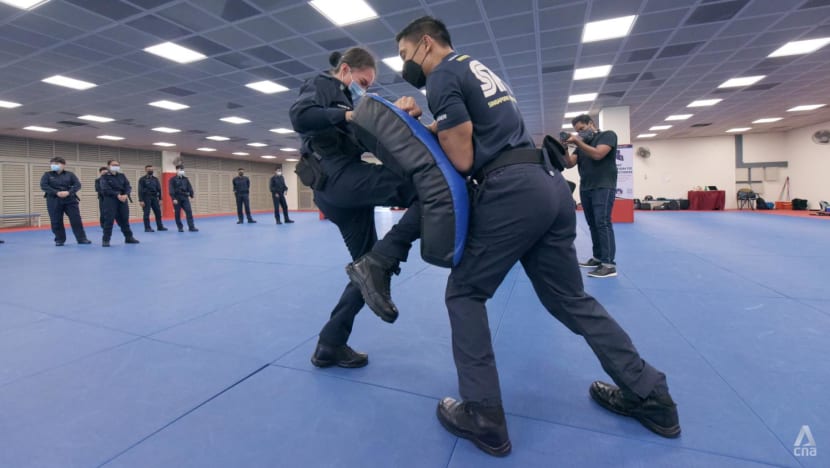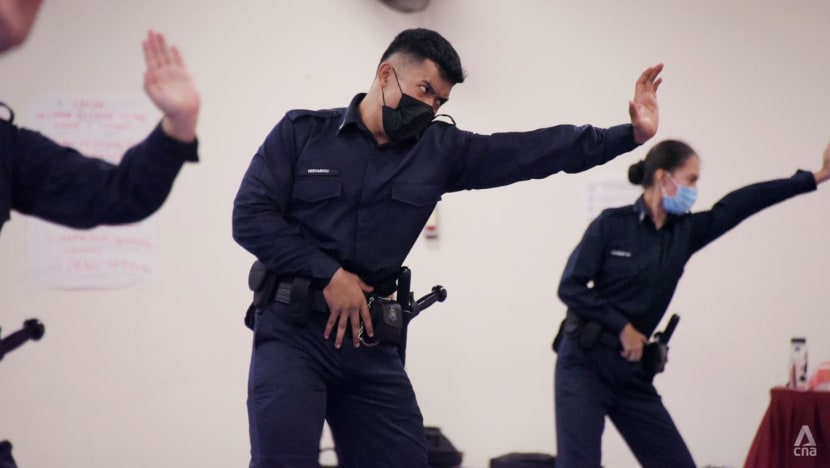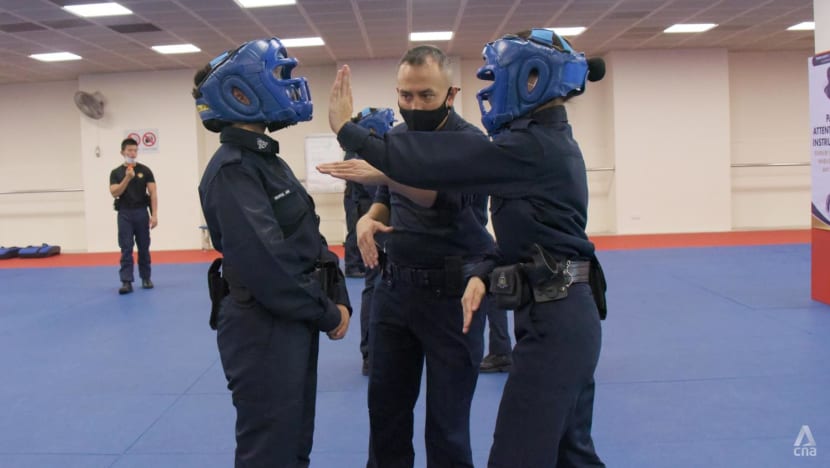Officers to be taught more 'instinctive' moves as Singapore Prison Service revises training in defensive techniques

A female Singapore Prison Service trainee officer executing a knee strike onto a training pad held by a Singapore Prison Training Institute trainer. (Photo: Try Sutrisno Foo)
SINGAPORE: The Singapore Prison Service (SPS) announced on Sunday (Oct 10) that it has updated some of the defensive techniques taught to all prison officers.
Close quarter defence techniques, which are among a suite of skills that officers are required to learn, allow officers to disengage aggressive inmates. This gives officers safe separation, enabling them to use other force options, such a baton or pepper spray to de-escalate the situation.
All uniformed officers pick up a set of tactical skills during the Prison Officer Course at the Singapore Prison Training Institute.
The other skills are the use of mechanical restraints, pepper spray, close quarter restraint techniques and the crisis support team where officers learn how to contain prison contingencies.
During the course, trainees will be tested on their knowledge of the Use of Force doctrine - rules governing officers’ use of force on inmates - and tactical skills through written and physical assessments.

Trainers will also conduct scenario-based training with trainees to re-enact various situations that trainees would experience on the ground. A virtual reality training system will complement the physical practices.
SPS said in a media release that it reviewed the close quarter defence techniques to develop methods that are “more instinctive to the dynamic situations that have been encountered”.
“These techniques were subsequently refined to make them more intuitive and easier to execute for all prison officers regardless of their physical abilities, to enhance the effectiveness of the techniques,” it said.
Chief Warder (CW) Irwan Kurniawan Rahmat, a trainer at the Singapore Prison Training Institute, said that the revised techniques are more “instinctive”, to match officers’ daily requirements.
The “reaction-based” techniques make it “easier for the officer to train, to understand and to execute”, he said, adding that the previous techniques required “a lot of repetition” to master.
But CW Irwan noted that force “is always the last resort”, adding that officers would always try to verbally de-escalate the situation first.
These techniques also help female officers, many of whom could be posted to prisons with male inmates.

On whether the training techniques give her the confidence that she would be able to handle male inmates, trainee Previtha Jay Bala Muraly said that the techniques they learn are not “strength-based”.
“The techniques that we use don’t just use your force, so they use all your different force options, how to get away from a situation.
“And the thing about prisons is that you never work alone, so in an institution you always have so many officers working with you,” she said.
She added that female officers receive the same amount of training and are held to the same standards as male officers.
“We focus towards that and try to do our best here,” she said.
“So that we know when we go on the ground, how much effort we are supposed to put, if … someone is charging towards you, for example.”
















